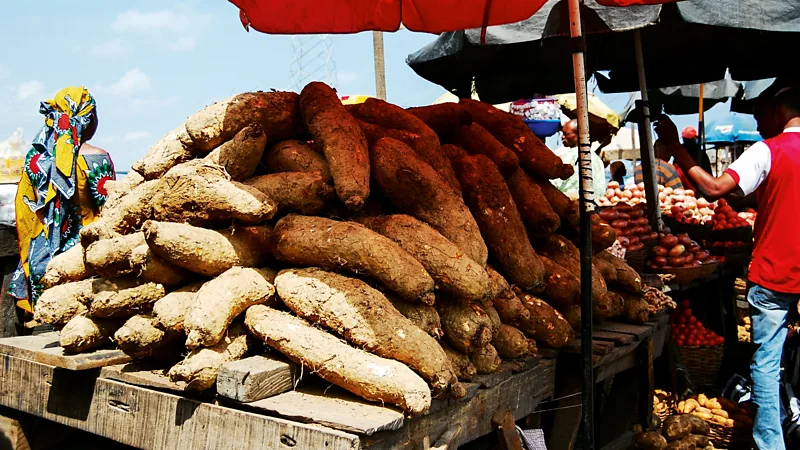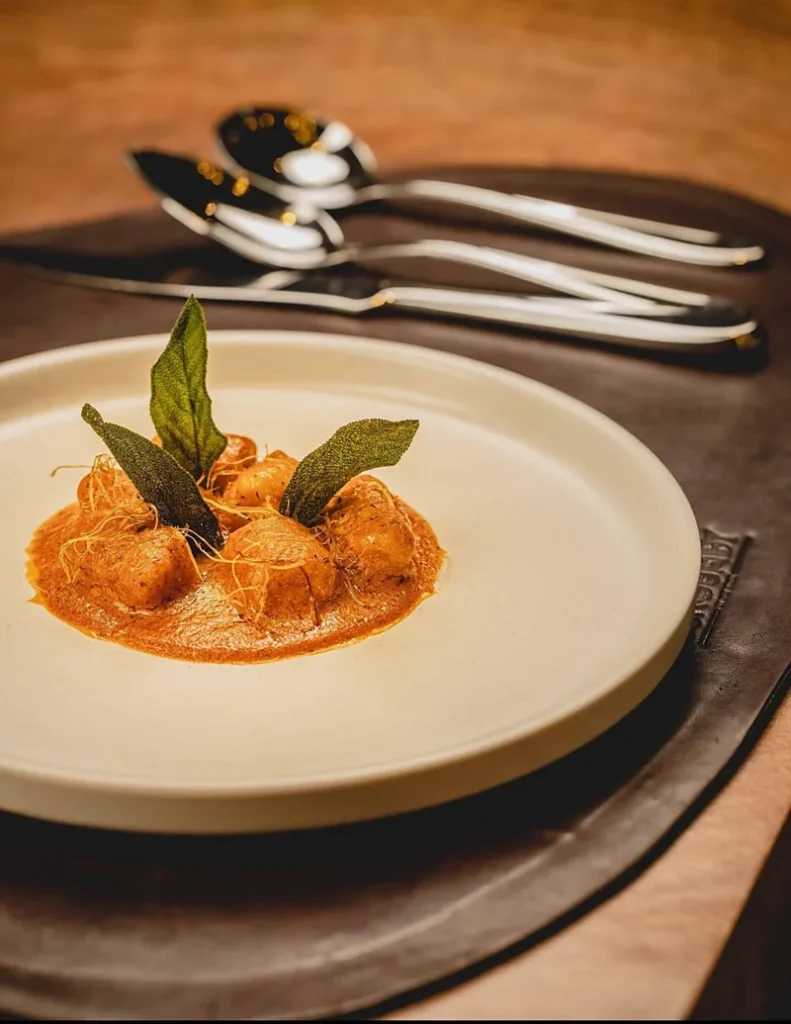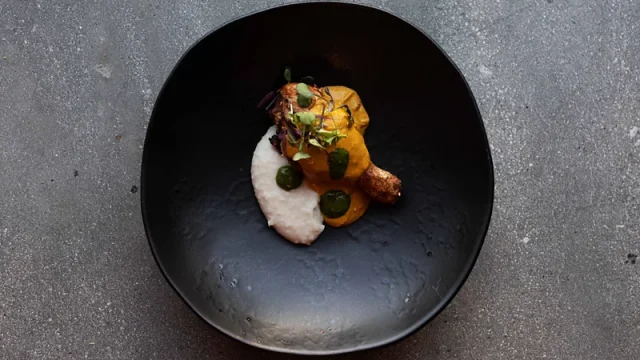Introduction; Nigerian yam
In Nigeria, one crop holds a special place in the hearts and culture of its people: the yam. This starchy tuber, often resembling logs with its cylindrical shape and rough skin, has been a vital part of the diet and cultural practices in Nigeria and West Africa for millennia. But the yam is more than just food; it is a symbol of heritage, wealth, and tradition. Across Nigeria and its global diaspora, the yam is celebrated in festivals, oral traditions, and now, in modern culinary innovations by chefs who are reimagining this ancient staple in new and exciting ways.
The Cultural Significance of Yam in Nigeria
Yam in Nigerian Festivals and Cultural Rites
Yam is deeply woven into the cultural fabric of Nigeria, playing a central role in various festivals and rites. One of the most prominent celebrations is the New Yam Festival, which is held annually between June and October to mark the end of the rainy season and the beginning of the harvest. Different ethnic groups across Nigeria, such as the Yakurr people of Cross River State and the Yoruba of Ikere-Ekiti, celebrate this festival with vibrant displays of dance, music, and masquerades. The yam is revered as a symbol of wealth, prosperity, and fertility, and its harvest is seen as a blessing from the gods.

The Symbolism of Yam in Nigerian Folklore
Yam is also a recurring theme in Nigerian folklore, symbolizing abundance and fertility. In many Nigerian tales, yam is associated with deities and spirits that are believed to bring good fortune and fertility to those who honor them. For instance, the Iroko tree spirit is said to grant fertility to women who offer yams in reverence. This deep cultural significance of yam is also reflected in proverbs and sayings across various Nigerian languages, where it is often used to impart wisdom and cultural values.
The Evolution of Yam in Modern Nigerian Cuisine
Yam in Traditional Nigerian Dishes
Traditionally, yam has been a versatile ingredient in Nigerian cuisine. It can be boiled, fried, roasted, or pounded, and is often served with various sauces and soups. One popular dish is “yam and egg sauce,” a comforting meal made with boiled yam and a flavorful sauce of scrambled eggs, tomatoes, sweet peppers, and onions. This dish is not only a weekend staple but is also believed to bring good luck and prosperity for the week ahead.
Yam in Contemporary Nigerian Cuisine
Today, Nigerian chefs both at home and abroad are taking the humble yam to new culinary heights. Chef Tolu Erogbogbo, affectionately known as “the billionaire’s chef,” has introduced yam to a global audience through his contemporary West African restaurants in Nigeria and Los Angeles. He fondly recalls the comfort of yam from his childhood, but now presents it in innovative ways, such as yam croquettes topped with truffles or yam dumplings served with deconstructed efo riro, a traditional Nigerian spinach stew.
Another chef, Aji Akokomi, has incorporated yam into the menu of his Michelin-starred West African fine dining restaurant, Akoko, in London. Here, yam is transformed into delicate croquettes and served alongside luxurious ingredients like truffles. Akokomi’s more casual eatery, Akara, offers a playful take on yam, using it to create a flavorful sauce served with barbecued pork and fermented Scotch bonnet peppers.
Yam Festivals: Celebrating the Harvest and Heritage
The New Yam Festival
The New Yam Festival, or Iri Ji, is a particularly significant event in Igboland, Southeastern Nigeria. It is a time of thanksgiving to the gods for a bountiful harvest and involves various rituals, including the consumption of all the yams from the previous harvest before the new yams are eaten. This festival is not only celebrated in Nigeria but also in Igbo communities around the world, where traditional practices are combined with modern technology, such as online streaming and social media, to share the celebrations with a global audience.
Regional Variations of Yam Festivals
While the New Yam Festival is celebrated across Nigeria, each region adds its own unique twist to the festivities. In Ogidi, Kogi State, for example, the Yoruba people perform traditional bata dances dressed in indigo-dyed adire garments, while female drummers sing oriki (praise poetry). These regional variations highlight the diversity and richness of Nigeria’s cultural heritage, all centered around the revered yam.
Yam in Modern Nigerian Restaurants
The Rise of Yam in Fine Dining
Yam has found its place in the world of fine dining, with chefs like Adenike Adefila of The Burgundy in Abuja, Nigeria’s first fine-dining pan-African restaurant, leading the charge. Adefila, who trained in French and Italian cuisine, applies her skills to create sophisticated yam dishes such as yam gnocchi with tomato relish and yam gratin infused with cardamom and calabash nutmeg. Her innovative approach showcases the versatility of yam and its potential to stand alongside the finest ingredients in global cuisine.

The Global Influence of Nigerian Yam
In London, chef Adejoké Bakare of Chishuru, the first Black woman in the UK to earn a Michelin star, has gained acclaim for her reinterpretation of traditional Nigerian dishes featuring yam. Her version of asaro, a Yoruba yam pottage, is elevated with smoked eel and purple sprouting broccoli, bringing a modern twist to a beloved classic.
Meanwhile, in the United States, chef Tolu Erogbogbo continues to push the boundaries of Nigerian cuisine at his private dining studio, ILÉ, in Los Angeles. His dishes, such as yam mousse with egusi sauce and yam dumplings with braised greens, are a testament to the yam’s adaptability and its central role in Nigerian culinary innovation.
Traditional Yam Dishes: A Connection to the Past
Classic Yam Recipes
Despite the modern innovations, traditional yam dishes remain deeply cherished in Nigerian cuisine. These recipes have been passed down through generations and are celebrated for their simplicity and flavor. Dishes like ofe nsala, a white soup thickened with yam and brimming with fresh seafood, and ojojo, crispy water yam fritters, continue to be favorites at Nigerian tables. Ukodo, an Urhobo one-pot dish of yam, green plantain, and meat simmered in a rich broth, is another beloved dish that showcases the versatility of yam.
Preserving Yam Traditions
While new culinary techniques and global influences have introduced fresh ways to enjoy yam, the traditional methods of preparing and consuming yam continue to connect Nigerians with their heritage. The simple act of cooking and eating yam, whether in a modern restaurant or at a family gathering, serves as a reminder of the deep cultural roots that have sustained the Nigerian people for centuries.

Conclusion
The yam is far more than just a starchy tuber; it is a symbol of Nigerian culture, heritage, and identity. From its central role in traditional festivals and rites to its evolution in modern cuisine, yam remains an enduring and beloved staple in Nigerian life. As Nigerian chefs continue to innovate and introduce yam to global audiences, they honor its rich legacy while also ensuring that it remains a vital part of the country’s culinary future. Whether enjoyed in a classic dish or a contemporary creation, the humble yam continues to nourish both the body and the soul of the Nigerian people.











